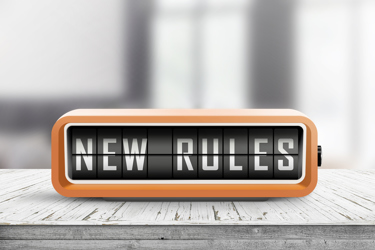NY Approves First-Ever Limit For 1,4-Dioxane In Drinking Water


New York has become the first state in the country to adopt a drinking water standard for the contaminant 1,4-dioxane, which has been found at high levels in some of its public supply wells. It also adopted stricter limits for some of the country’s most pernicious drinking water contaminants, meaning that treatment systems in the state will have a significantly larger burden in getting effluent up to snuff.
“The state Department of Health’s Public Health and Health Planning Council … unanimously approved setting maximum contaminant levels of 1 part per billion for 1,4-dioxane, an industrial solvent also present in some household products, as well as 10 parts per trillion each for perfluorooctane sulfonate (PFOS), found in firefighting foams, and perfluorooctanoic acid (PFOA), used in nonstick and stain-resistant products,” Newsday reported. “The action caps a five-year process that generated thousands of public comments and forced local water districts to initiate construction of complex new treatment systems estimated to cost a total of nearly a billion dollars.”
The U.S. EPA has indicated that chronic exposure to 1,4-dioxane at 0.35 ppb carries a very slight cancer risk. It has also implemented drinking water advisories for PFOS and PFOA, but no specific limits.
Areas of New York, particularly Long Island, have long struggled with high levels of 1,4-dioxane in water and many communities have filed lawsuits targeting the companies responsible for the pollution. Meanwhile, PFOA and PFOS are plaguing water sources around the country, and Long Island has been no exception.
“On Long Island, PFOS and PFOA have been found at high levels at select wells,” per Newsday. “But 1,4-dioxane is far more prevalent, with 70% of wells found to have at least trace amounts of the solvent.”
Of course, ridding drinking water of these contaminants won’t be easy, or cheap.
“Currently, Long Island Suppliers have already spent more than $150 million on treatment systems,” said Richard Passariello of the Long Island Water Conference, according to ABC 7. “Within the next five years, suppliers on Long Island will pay approximately $700 million more to get all the systems in place.”
For instance, ABC 7 reported that the state’s Hicksville Water District has installed two treatment systems that incorporate UV for 1,4-dioxane removal along with carbon-filtering for PFOA and PFOS, with plans to add four more filtrating systems at a projected cost of $70 million.
It’s possible that these expenses will be passed on to ratepayers, but it appears as if regulators and treatment systems want to hold the polluters that infected source water with these contaminants in the first place responsible.
“New York State Senator Jim Gaughran (D-Huntington) sponsored a law passed in November, which allows water districts to sue manufacturers who knew chemicals in their products would leak into Long Island’s aquifers,” per ABC 7. “Multiple lawsuits have already been filed, including by the Hicksville Water District against chemical company Dow.”
To read more about the rules that govern drinking water treatment plants, visit Water Online’s Regulations And Legislation Solutions Center.
